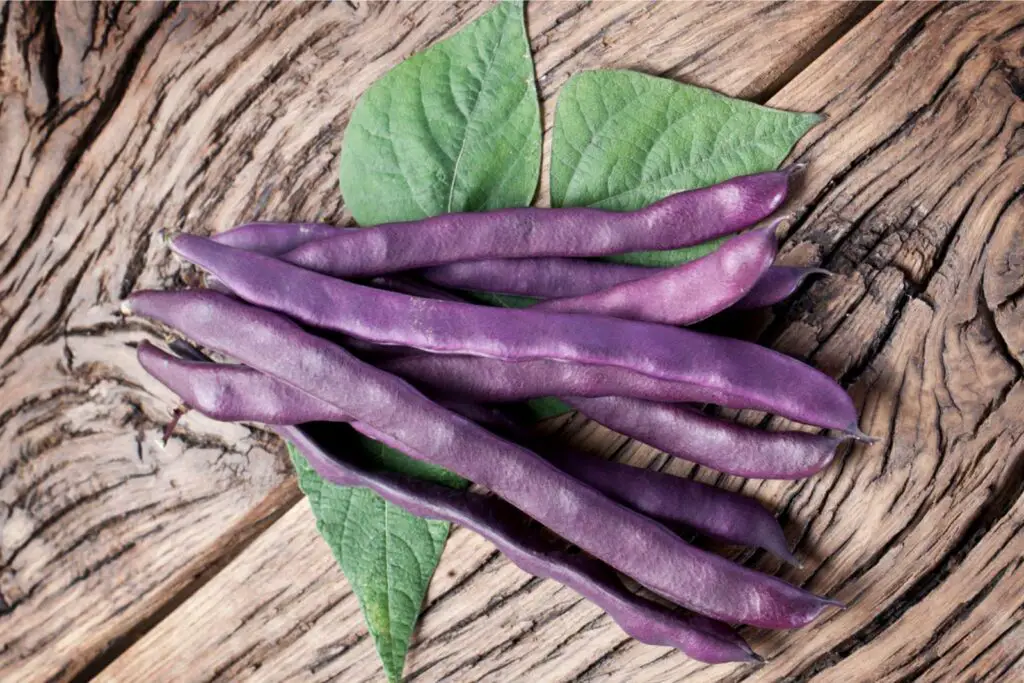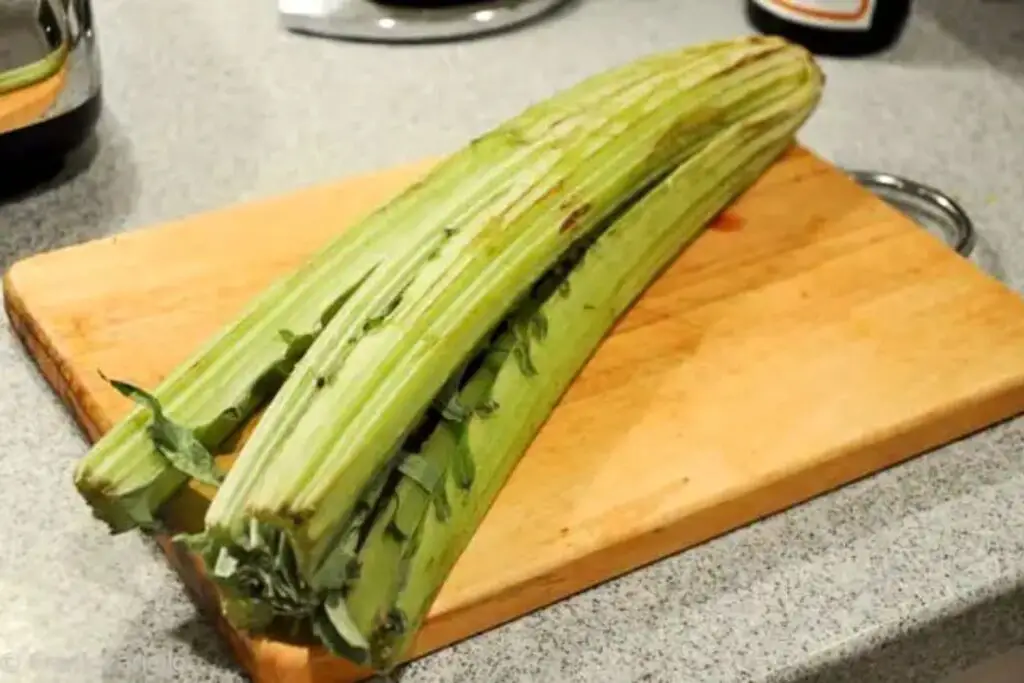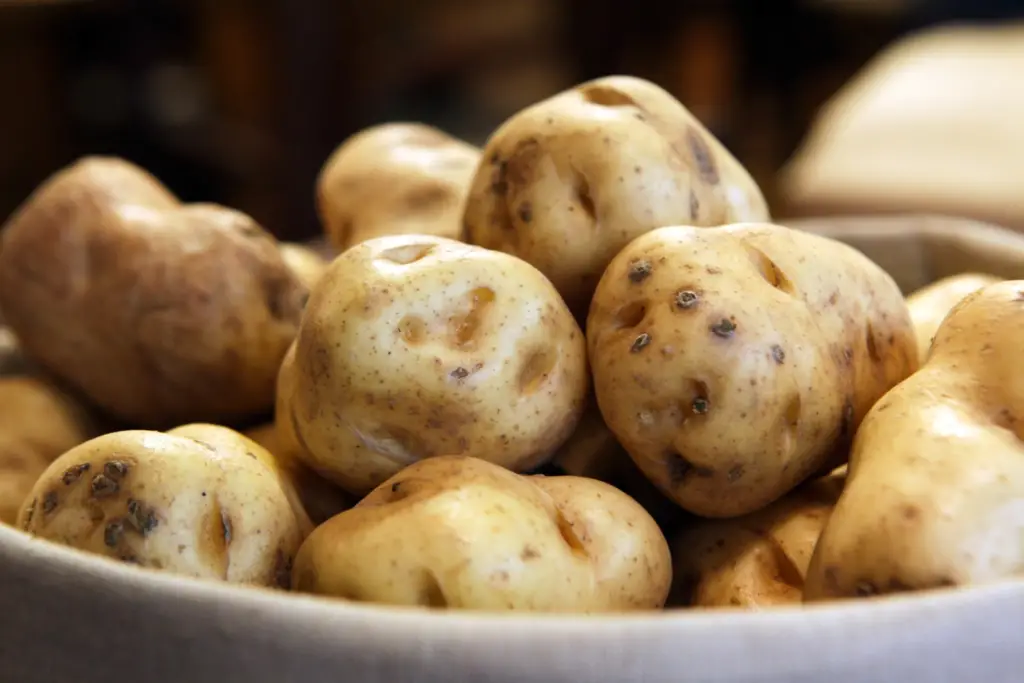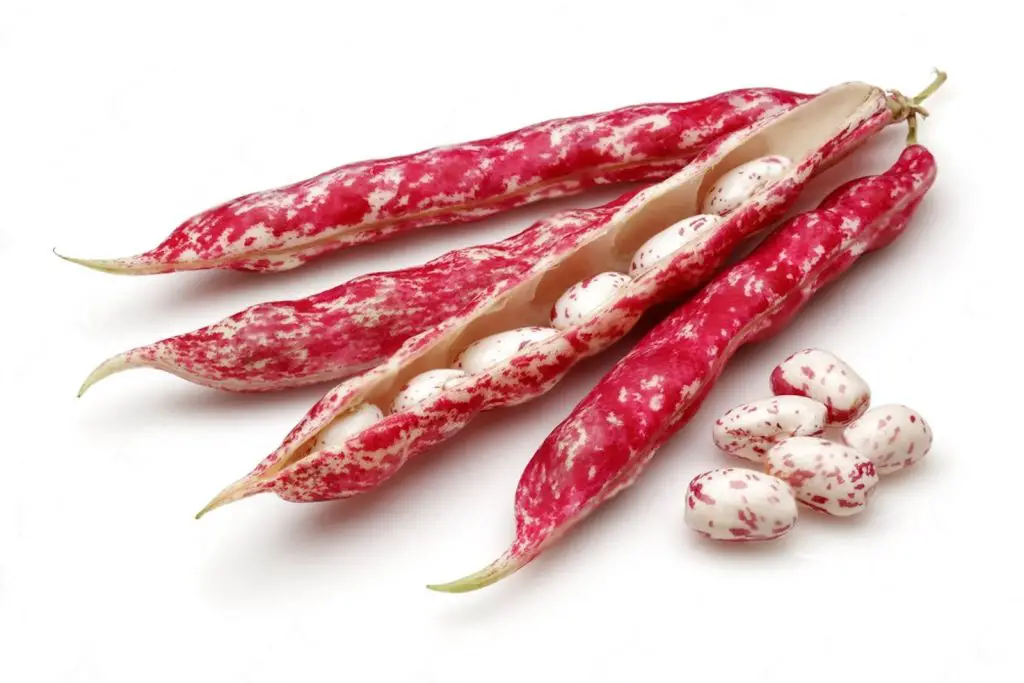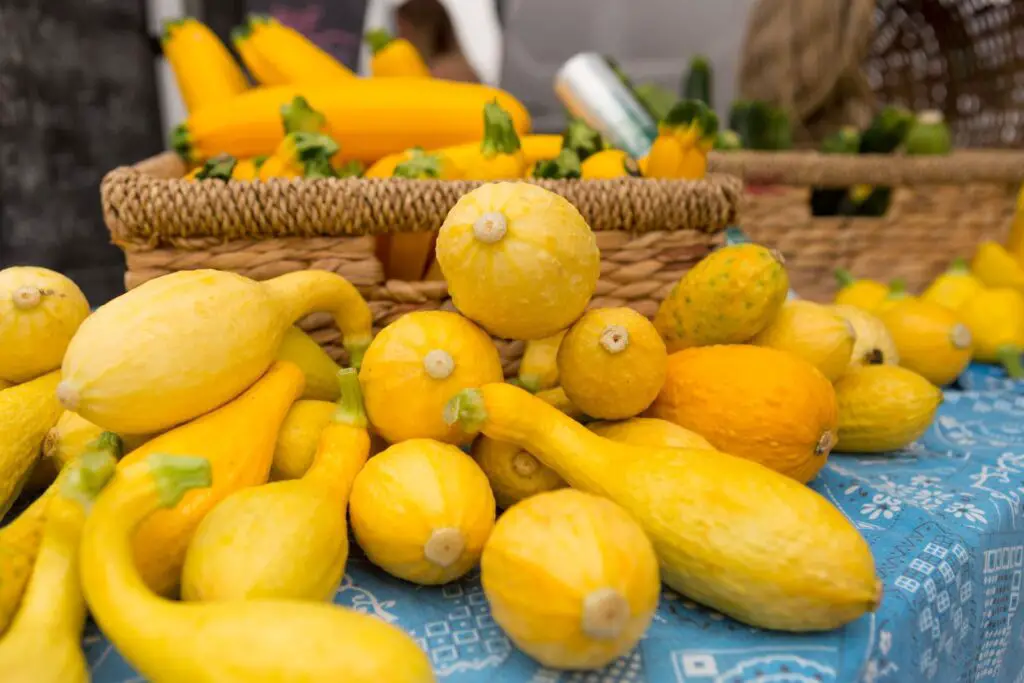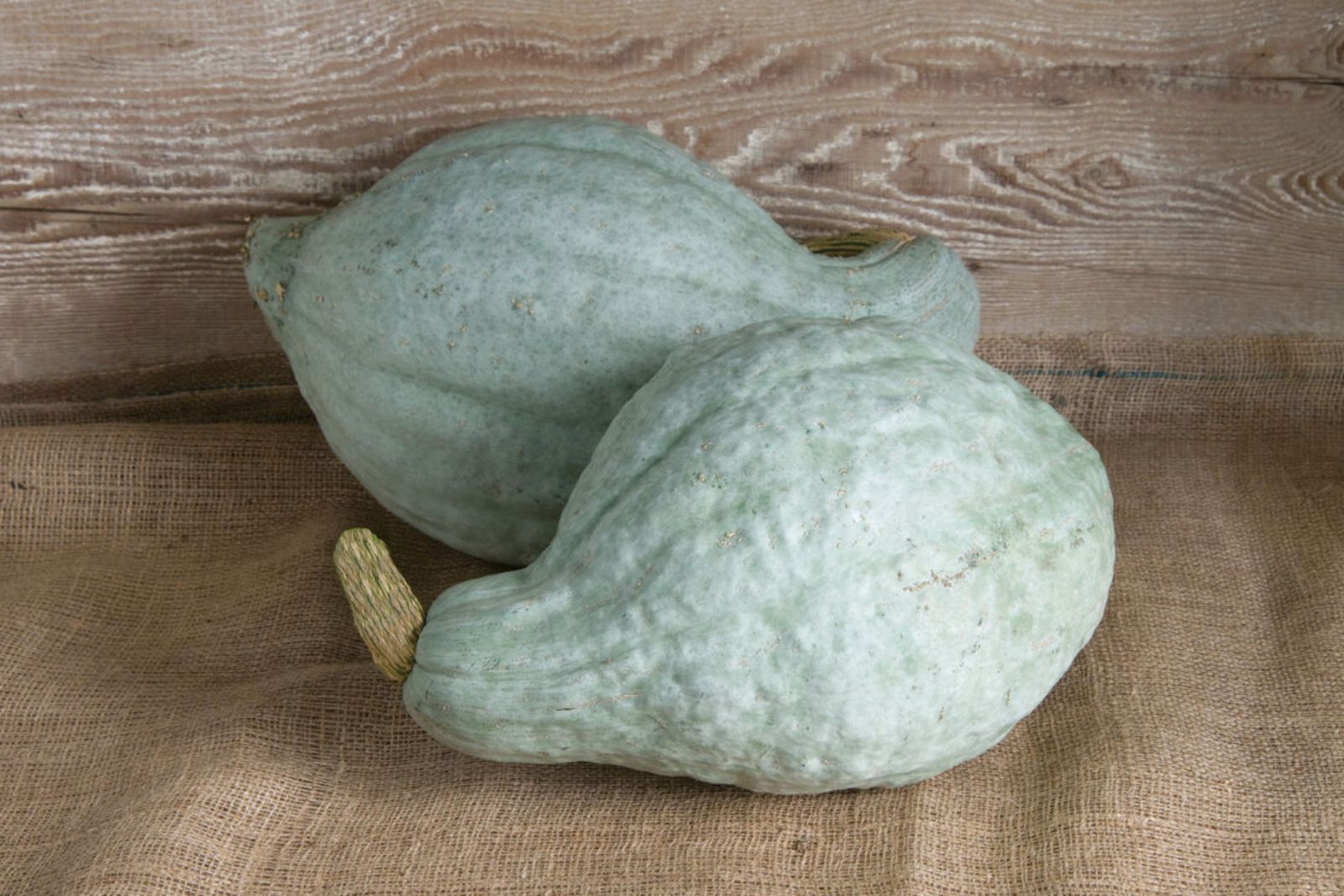
Hubbard squash, a winter squash variety known for its large size and sweet, nutty flavor, is a versatile ingredient that can be enjoyed in various culinary preparations. Whether roasted, pureed, or used in soups and stews, Hubbard squash adds a rich and satisfying element to dishes. However, when faced with an abundant harvest or a desire to preserve its flavors for later use, freezing becomes an excellent option. Freezing Hubbard squash allows you to enjoy its delightful taste and nutritional benefits throughout the year, ensuring a convenient and readily available ingredient for your favorite recipes.
Here’s a step-by-step guide on how to freeze Hubbard squash:
Step 1: Prepare the Hubbard squash
To begin the process of freezing Hubbard squash, it’s important to start with fresh and ripe squash. Selecting high-quality squash ensures that you’ll freeze a product with optimal taste and texture. Here’s a breakdown of the steps involved in preparing the squash for freezing:
- Select fresh and ripe Hubbard squash: Look for squash that is firm and free from any visible signs of damage or decay. A healthy squash will have a vibrant color and firm outer skin.
- Wash the squash: Before cutting into the squash, wash it thoroughly under cool running water. This helps remove any dirt or debris that may be present on the surface.
- Use a clean knife: Use a clean knife to cut the squash into manageable pieces. Depending on your preference and the size of the squash, you can cut it into halves, quarters, or even smaller segments. By cutting the squash into smaller pieces, it becomes easier to handle and store.
- Remove the seeds and fibrous strings: Once the squash is cut, scoop out the seeds and remove any fibrous strings attached to them. These parts are typically not desirable for freezing and can affect the texture of the squash when thawed. It’s best to discard the seeds and strings.
Step 2: Blanch the squash
Blanching is a crucial step in freezing Hubbard squash as it helps preserve its quality, color, and texture. Here’s a detailed explanation of why and how to blanch the squash:
Blanching involves briefly cooking the squash in boiling water and then rapidly cooling it down. This process serves several purposes:
- Enzyme inactivation: Blanching helps inactivate enzymes present in the squash. Enzymes are naturally occurring substances that can cause undesirable changes in color, texture, and flavor over time. By blanching the squash, enzymes are deactivated, slowing down these natural processes and preserving the squash’s overall quality.
- Retaining color: Blanching helps the squash retain its vibrant color. The heat applied during blanching helps to set the color pigments in the squash, preventing them from breaking down or fading during freezing.
Here’s a step-by-step guide to blanching Hubbard squash:
- Fill a large pot with water: Select a pot that is large enough to accommodate the amount of squash you are planning to freeze. Fill it with enough water to fully submerge the squash pieces.
- Bring the water to a boil: Place the pot on the stove and bring the water to a rolling boil over high heat.
- Add the prepared squash: Carefully place the prepared Hubbard squash pieces into the boiling water. It’s important to avoid overcrowding the pot, as this can lower the water temperature and affect the blanching process.
- Cook for about 3 minutes: Allow the squash to cook in the boiling water for approximately 3 minutes. The exact blanching time may vary depending on the size and thickness of the squash pieces. Adjust the cooking time accordingly, ensuring that the squash becomes tender but does not become overly soft.
Proper blanching helps prepare the squash for freezing by deactivating enzymes and preserving its color and texture. The brief cooking time helps retain the squash’s natural flavors, ensuring it remains delicious when thawed and cooked later.
Can I freeze Hubbard squash without blanching it?
While it is generally recommended to blanch Hubbard squash before freezing, it is possible to freeze it without blanching. However, blanching helps preserve the quality and color of the squash by halting enzyme activity and reducing the risk of freezer burn. Without blanching, the squash may experience texture changes and potentially shorter freezer shelf life.
Step 3: Cool the squash
After blanching the Hubbard squash, it is crucial to cool it down rapidly to halt the cooking process and preserve its texture. Here’s why and how to cool the squash properly:
- Stop the cooking process: Transferring the blanched squash pieces to a bowl of ice water immediately after boiling helps stop the cooking process. This rapid cooling prevents the squash from becoming overly cooked or mushy.
- Retain texture: Cooling the squash in ice water helps preserve its desired texture. By rapidly lowering the temperature, the cells in the squash firm up, maintaining a pleasant texture when it’s time to consume it.
- Prevent mushiness: Allowing the squash to sit in the ice water for the same amount of time as the blanching duration ensures even cooling and prevents the squash from becoming mushy. This step is especially important for preserving the squash’s structure and integrity during the freezing and thawing processes.
Here’s how to cool the blanched squash:
- Prepare a bowl of ice water: Fill a large bowl or basin with cold water and add plenty of ice cubes to make it icy cold.
- Transfer the squash to the ice water: Using a slotted spoon or tongs, carefully remove the blanched squash pieces from the boiling water and immediately submerge them in the bowl of ice water. Gently agitate the squash pieces in the water to ensure even cooling.
- Allow the squash to cool: Leave the squash in the ice water for the same duration as the blanching time. For example, if you blanched the squash for 3 minutes, let it sit in the ice water for 3 minutes as well.
- Drain and pat dry: After the cooling period, remove the squash from the ice water and drain them thoroughly. Use a clean kitchen towel or paper towel to pat the squash pieces dry. It’s important to remove excess moisture before packaging and freezing to prevent ice crystals from forming and affecting the quality of the frozen squash.
Step 4: Package the squash
After cooling the Hubbard squash, proper packaging is essential to protect it from freezer burn and maintain its quality during freezing. Here’s why and how to package the squash for optimal preservation:
- Remove excess moisture: Before packaging the cooled squash, drain any excess water and pat the pieces dry with a clean kitchen towel. Moisture can lead to the formation of ice crystals, which can affect the texture and taste of the frozen squash. Removing moisture helps prevent this.
- Individually wrap the squash: To ensure each piece of squash is well-protected, it’s best to individually wrap them. Tightly wrap each piece with plastic wrap, ensuring there are no air pockets or openings. The plastic wrap acts as a barrier, preventing air and moisture from reaching the squash and causing freezer burn.
- Freezer-safe bags: Alternatively, you can place the wrapped squash pieces in freezer-safe bags. Make sure to squeeze out as much air as possible from the bag before sealing it. This minimizes the chance of freezer burn and maintains the quality of the squash. Freezer-safe bags provide an additional layer of protection and make it convenient to store and organize the squash in the freezer.
- Vacuum sealing: For even better preservation, consider using a vacuum sealer. A vacuum sealer removes excess air from the packaging, creating an airtight seal. This method further protects the squash from freezer burn and extends its freezer shelf life. Follow the manufacturer’s instructions for vacuum sealing equipment.
Proper packaging is crucial to maintaining the quality and taste of the Hubbard squash during its time in the freezer. By minimizing air exposure and removing excess moisture, you create an optimal environment for freezing the squash. Whether using plastic wrap or freezer-safe bags, ensure the packaging is tightly sealed to protect the squash from freezer burn and maintain its freshness.
Can I freeze Hubbard squash in glass containers?
Yes, you can freeze Hubbard squash in glass containers, but it is important to use freezer-safe glass containers specifically designed for freezing. These containers should be able to withstand extreme temperature changes without cracking or breaking. Additionally, leave some space at the top of the container to allow for expansion during freezing.
Step 5: Label and date the packages
Properly labeling and dating the packages of frozen Hubbard squash is an important step in maintaining organization and ensuring optimal freshness. Here’s why labeling is crucial and how to do it effectively:
- Content identification: Labeling each package with the name “Hubbard squash” allows you to quickly identify its contents. This is particularly useful when you have multiple types of frozen foods in your freezer. Clear labeling helps you locate the squash easily and prevents confusion with other items.
- Storage duration tracking: Including the date of freezing on the package allows you to track the storage duration of the Hubbard squash. Freezing can alter the taste and texture of foods over time, so it’s important to use the oldest packages first to enjoy the best quality. By dating the packages, you can easily identify which ones should be consumed sooner rather than later.
Here’s how to effectively label and date the packages of frozen Hubbard squash:
- Use a permanent marker: Choose a permanent marker with a fine tip for clear and long-lasting labeling. Avoid using regular pens or markers, as they may fade or smudge over time in the freezer.
- Write the name and date: On each package of frozen Hubbard squash, write “Hubbard squash” to clearly indicate its contents. Then, add the date of freezing. For example, write “Hubbard squash – MM/DD/YYYY” to indicate that it was frozen on that specific date.
- Place the label prominently: Write the label on a visible area of the package, such as the front or the top. This makes it easy to spot and read without having to search through the freezer.
Step 6: Store in the freezer
Proper storage of the wrapped and labeled Hubbard squash packages in the freezer is crucial for maintaining their quality and preventing freezer burn. Here’s how to store the frozen squash effectively:
- Individual freezing: Start by arranging the wrapped and labeled Hubbard squash packages in a single layer on a baking sheet or tray. By freezing them individually at first, it allows each piece to freeze separately. This prevents them from sticking together and makes it easier to remove individual portions later without disturbing the rest.
- Freezing on a tray: Placing the tray in the freezer ensures stability and prevents the squash packages from toppling over or getting crushed. Make sure the tray is flat and level before placing it in the freezer.
- Transfer to freezer-safe containers or bags: Once the squash packages are individually frozen, transfer them to freezer-safe containers or resealable plastic bags. Choose containers or bags specifically designed for freezer use to maintain the best quality. Ensure the containers or bags are tightly sealed to prevent air from entering, which can lead to freezer burn.
- Remove excess air: Before sealing the bags, squeeze out as much excess air as possible. This minimizes the chance of freezer burn and helps preserve the texture and flavor of the frozen squash. Alternatively, if using containers, make sure they have airtight lids to keep air out.
- Store in the coldest part of the freezer: Place the containers or bags of frozen Hubbard squash in the coldest part of your freezer. This is usually the back or the bottom shelf. Keeping them in the coldest area helps maintain a consistent temperature and reduces the likelihood of temperature fluctuations that can affect the quality of the squash.
Proper storage in the freezer ensures that the Hubbard squash remains in the best condition for an extended period. By freezing them individually, transferring them to suitable containers or bags, and placing them in the coldest part of the freezer, you create an optimal environment for preserving the texture, taste, and nutritional value of the frozen squash.
Remember to handle the frozen squash with care to prevent any damage to the packages and always follow recommended storage times to ensure the best quality when it’s time to thaw and use the squash.
What is the ideal temperature when freezing Hubbard squash?
The ideal temperature for freezing Hubbard squash is 0 degrees Fahrenheit or -18 degrees Celsius. This temperature ensures that the squash freezes quickly and maintains its quality during storage. Freezing at lower temperatures helps to preserve the flavor, texture, and nutritional value of the squash for an extended period.
Other related questions
How do I thaw frozen Hubbard squash?
To thaw frozen Hubbard squash, there are a few methods you can use. One option is to transfer the frozen squash from the freezer to the refrigerator and allow it to thaw slowly overnight. Alternatively, you can place the sealed package of frozen squash in a bowl of cold water and change the water every 30 minutes until thawed. If you need to thaw it quickly, you can use the defrost setting on your microwave, making sure to follow the manufacturer’s instructions. Once thawed, the squash can be used in recipes or reheated as desired.
How long can I store frozen Hubbard squash?
You can store frozen Hubbard squash for an extended period if properly packaged and stored. When stored at 0 degrees Fahrenheit or -18 degrees Celsius, frozen Hubbard squash can maintain its quality for up to 12 months. However, for the best flavor and texture, it is recommended to use the frozen squash within 6 to 8 months. Beyond this timeframe, the squash may still be safe to eat but could experience some deterioration in taste and texture. Remember to label the packages with the freezing date for easy tracking of storage duration.
Can I refreeze previously thawed Hubbard squash?
It is generally not recommended to refreeze previously thawed Hubbard squash. When you thaw squash, it undergoes some changes in texture and moisture content, which can affect its quality. Refreezing the squash after it has been thawed and partially cooked may lead to further deterioration in texture, flavor, and nutritional value. It is best to use the thawed Hubbard squash promptly or store it in the refrigerator for a short period before consuming it.
How do I know if my frozen Hubbard squash has gone bad?
To determine if your frozen Hubbard squash has gone bad, there are a few signs to look for. First, check for any unusual or off-putting odors. If the squash emits a sour or rancid smell, it may be an indication of spoilage. Additionally, examine the texture of the squash. If it appears mushy, slimy or has developed ice crystals, it may have deteriorated in quality. Finally, trust your senses when thawing and tasting the squash—if it has an unpleasant taste or texture, it is best to discard it to avoid any potential health risks.
Can I use frozen Hubbard squash with the new ones?
Yes, you can use frozen Hubbard squash alongside fresh ones. Frozen Hubbard squash can be a convenient option for recipes when fresh squash is not readily available. However, keep in mind that frozen squash may have a slightly different texture after thawing compared to fresh ones. Adjust the cooking time accordingly and consider using thawed squash in dishes where texture is less crucial, such as soups, stews, or purees.
Can I freeze the whole Hubbard squash without cutting it into pieces?
It is not recommended to freeze a whole Hubbard squash without cutting it into pieces. Freezing a whole squash can lead to difficulties in thawing and uneven freezing, resulting in a mushy texture and loss of flavor. Cutting the squash into manageable pieces allows for more efficient freezing and thawing processes, ensuring better quality and easier usage when needed.
Should I remove the skin before freezing Hubbard squash?
It is generally recommended to remove the skin before freezing Hubbard squash. The skin can become tough and affect the texture of the frozen squash. By removing the skin, you ensure a more consistent texture and prevent any potential bitterness that may develop during freezing and thawing.
Can I freeze mashed Hubbard squash?
Yes, you can freeze mashed Hubbard squash. Mashed squash freezes well and can be a convenient option for future use in various recipes. Ensure that the mashed squash is cooled before transferring it to freezer-safe containers or bags, and leave some headspace to allow for expansion during freezing.
Can I freeze Hubbard squash seeds for later use?
It is not recommended to freeze Hubbard squash seeds for later use. Freezing can affect the viability of the seeds, making them less likely to germinate successfully. If you wish to save Hubbard squash seeds for planting, it is best to properly dry and store them in a cool, dry place rather than freezing them.
Can I freeze Hubbard squash puree for baking?
Yes, you can freeze Hubbard squash puree for baking purposes. Freezing pureed squash allows you to have a convenient ingredient ready for use in various baked goods such as cakes, muffins, or pies. Ensure the puree is cooled before transferring it to freezer-safe containers or bags, and label them with the date for easy reference.
Can I freeze stuffed Hubbard squash?
It is generally not recommended to freeze stuffed Hubbard squash. Freezing can cause the stuffing to become soggy and affect the overall texture and taste of the dish. If you want to enjoy stuffed Hubbard squash later, it’s best to freeze the components separately, such as the cooked squash and the stuffing, and then assemble and bake them fresh when ready to serve.

